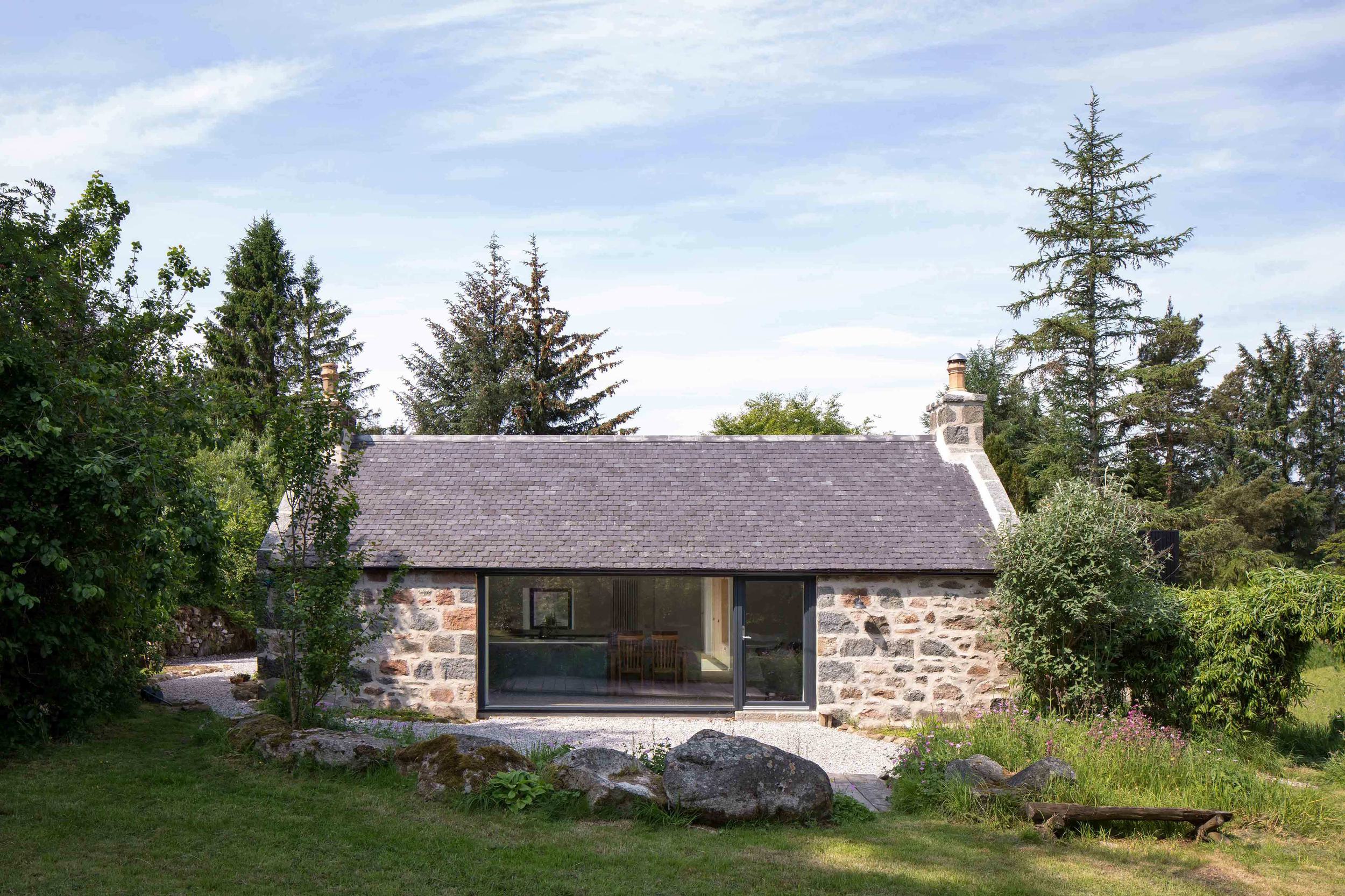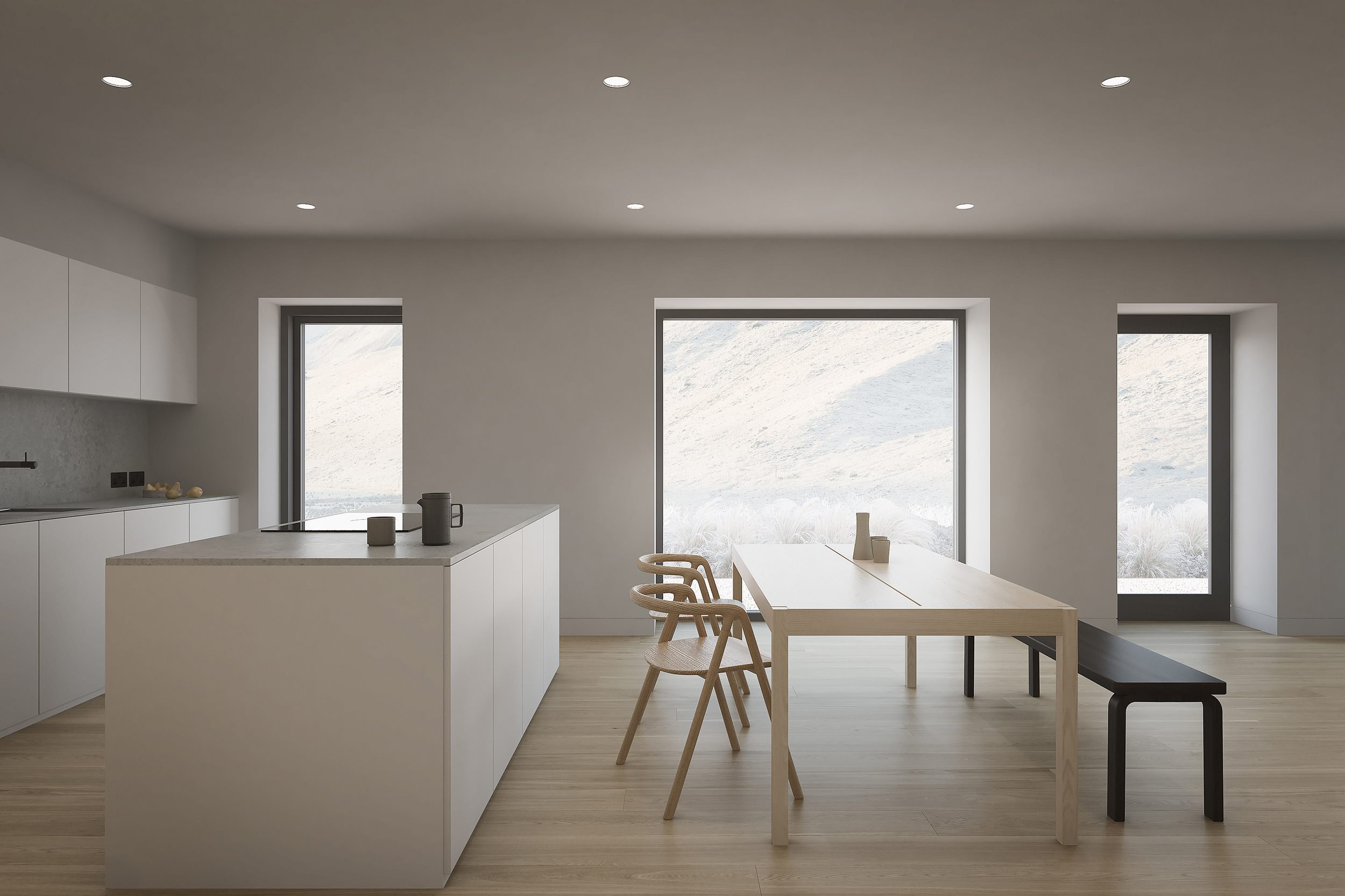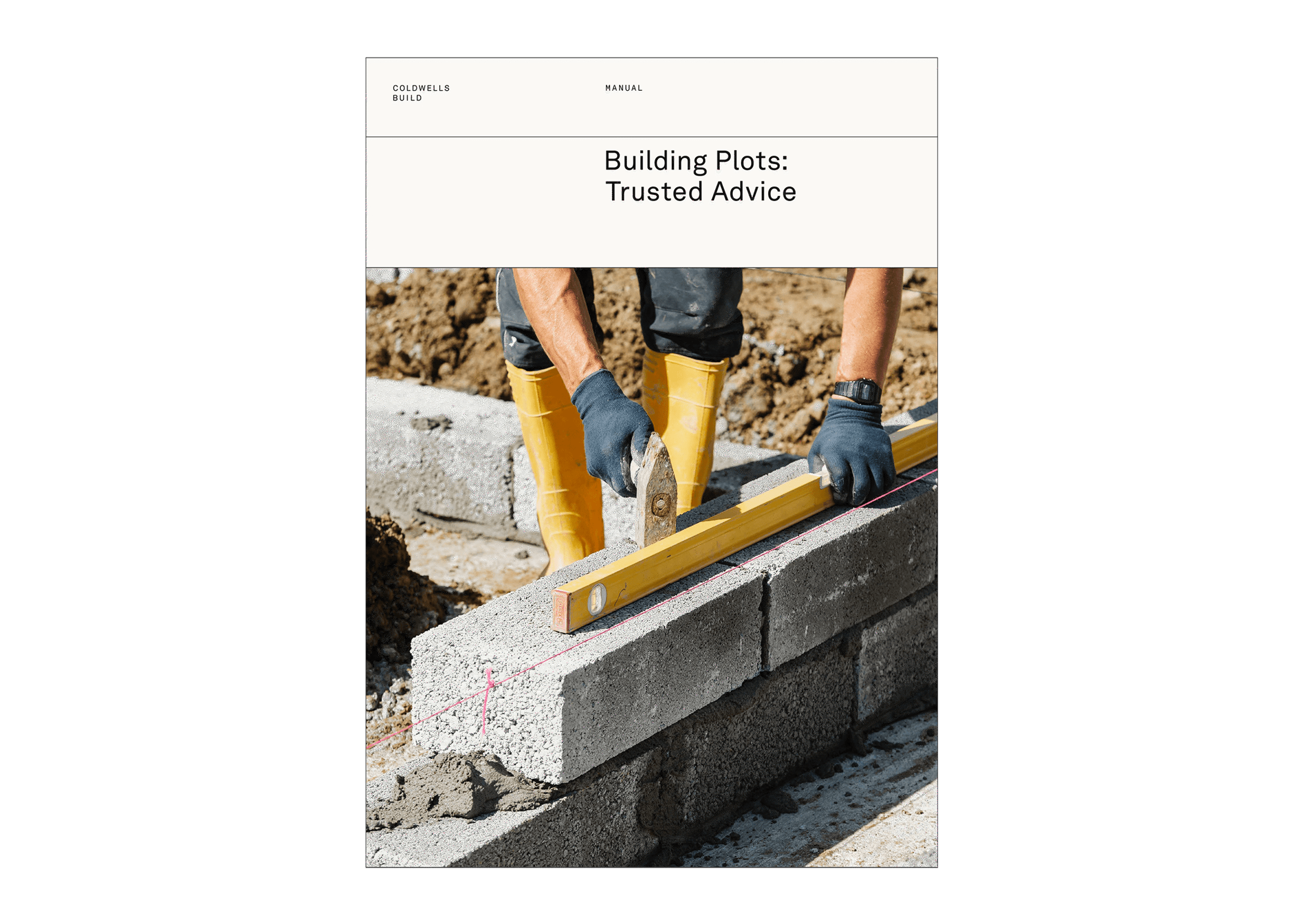Straightforward projects like adding loft space, a bathroom renovation, or kitchen renovation can be completed for much less than a new build.
However, the average price of a whole-house renovation, which includes:
- Stripping out
- Reinsulating
- Reframing
- Levelling floors
- Replacing windows and doors
- Bespoke kitchens and bathrooms
- New roof
- Additional plumbing and rewiring
… can be comparable (if not more expensive) than building from scratch. This is because there's a lot more labour involved in taking the home apart, before putting it back together.
There's also a greater chance of coming across unwelcome surprises. Asbestos, or structural problems can be uncovered, which can quickly make costs rise.
During our Farragon renovation, our team discovered that the hallway floor felt unstable underfoot. Upon lifting it, we found that the joists were precariously propped up and supported by large stones, necessitating a complete replacement of the floor.
Keep aside a contingency budget of around 15-20% - potentially more if it's a period property or historical building. Anyone who has ever gone through a major renovation will tell you the final construction cost is always higher than anticipated.
Renovation work also attracts 20% VAT. There'll also be expenses like professional fees, (architects, surveyors) local council planning costs and rent if you need to move out while building work takes place.










